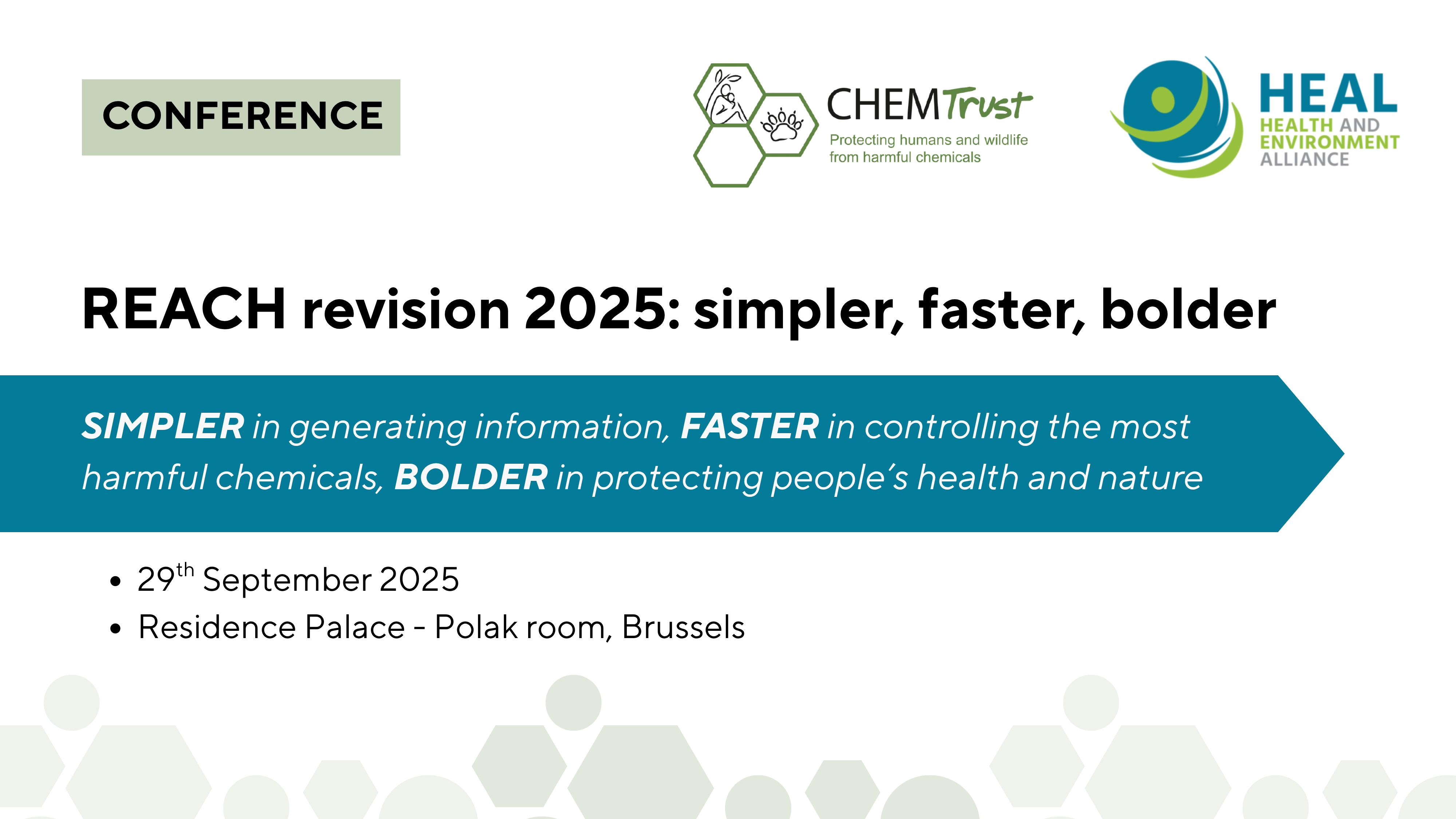The EU Healthy Air Coalition (EUHAC), a coalition of diverse constituencies of the health sector, urges the Commission President to ensure that the next EU budget will help the EU substantially advance towards clean air and the prevention of the major diseases caused by air pollution.
The essential use concept is a relatively new notion in EU chemicals legislation that has great potential to speed up the regulation of harmful substances, by asking the critical question whether the specific uses of these chemicals are necessary for the functioning of society. The concept, borrowed from the global Montreal Protocol agreement, could be an efficient tool to better protect health and the environment and to fuel the much-needed discussion around the omnipresence of hazardous chemicals in our daily lives, if implemented properly.
The European Commission announced in its Chemicals Strategy for Sustainability an overhaul of REACH, a juggernaut of EU chemicals legislation which stipulates how substances coming onto the EU market are registered, evaluated, authorised and if needed, restricted. On a market where an estimated 75% of chemicals produced are hazardous to health, one question that should be asked as part of the REACH reform is whether the use of harmful chemicals in consumer products and in other applications is actually necessary for the betterment of society, before they are authorised to be placed on the EU market.
That’s where the concept of essential use comes in. By introducing clear criteria to determine which chemicals contribute something necessary for society and which do not, the risk assessment of these chemicals could be sped up tremendously and help eliminate the presence of harmful substances in thousands of consumer products.
It is important to note that the essential use concept focuses on whether a chemical’s function in a product is essential, not whether the product itself is essential for society. For instance, the question is not whether toothpaste should be banned, but whether titanium dioxide, a suspected carcinogen used only as a whitening agent, is necessary in toothpaste.
In April 2024, the European Commission published its long-awaited proposal for criteria on the essential use concept delivering on this key promise made in the Chemicals Strategy for Sustainability. The proposal aims to accelerate the phase-out of the uses of the most harmful substances that are non-essential and, where they are essential, to provide time for their substitution. The Commission proposes two criteria to determine whether a chemical is indeed essential:
- The use of a chemical is necessary for health or safety or is critical for the functioning of society.
- There are no acceptable alternatives.
The Commission’s criteria furthermore specifies that for harmful substances deemed necessary for society, conditions should be set to minimise exposure of people and the environment.
The current proposal leaves the door wide open for interpretation
The application of the essential use concept in EU chemicals legislation can only be effective if the protection of people’s health and the environment is prioritised. However, the European Commission’s proposed criteria of what makes a chemical ‘necessary for health or safety’ or critical for society is defined too broadly, leaving ample room for competing interpretations.
Of similar concern is the proposed use and definition of the term ‘acceptable’ when talking about available alternatives. The notion of an ‘acceptable alternative’ involves an evaluation of the technical and economic feasibility of a specific chemical substance, as well as determining whether the alternative is safer compared to the substance it is meant to replace. The current definition, however, leaves room for industry and manufacturers to argue that alternatives, even if they are already readily available on the market, are not “acceptable” for their specific intended use of a dangerous chemical.
What’s more, the definition of what is an ‘acceptable alternative’ for a specific harmful substance within the essential use concept is at risk of being applied inconsistently across different EU legislation. At the moment, various EU chemicals laws already apply different definitions of what constitutes an acceptable alternative. If the newly proposed essential use criteria are based on these existing different definitions, the assessment of acceptable alternatives will vary from one framework to another. This will create confusion for consumers and manufacturers alike and potentially result in double standards in terms of health and environment protection.
These various degrees of freedom to interpret the EU Commission’s criteria for essential use could lead to broad exemptions for the use of the most hazardous chemicals in entire categories of products. For example, some harmful chemicals used in the health sector may legitimately be considered as essential for specific health and safety purposes. However, not every hazardous chemical utilised in the health sector should automatically benefit from this exemption. A more detailed approach is needed to ensure the essential use concept does not become a wildcard for obtaining broad exemptions for harmful chemicals.
Applying clear essential use criteria in all future EU chemicals legislation can help minimise people’s exposure to harmful substances
The essential use concept has the potential to be a powerful tool to protect health and the environment by speeding up the phase-out of hazardous chemicals where they are non-essential. HEAL is strongly in favour of the translation of strong essential use criteria in all future reforms of EU chemicals legislation (including REACH), provided the criteria for its definition are clear and harmonised and do not leave loopholes to continue business as usual.
The essential use concept also has the potential to fuel the much-needed discussion about what is essential for our society at large. To meet its full potential, the protection of health and the environment must be at the forefront of its implementation.


